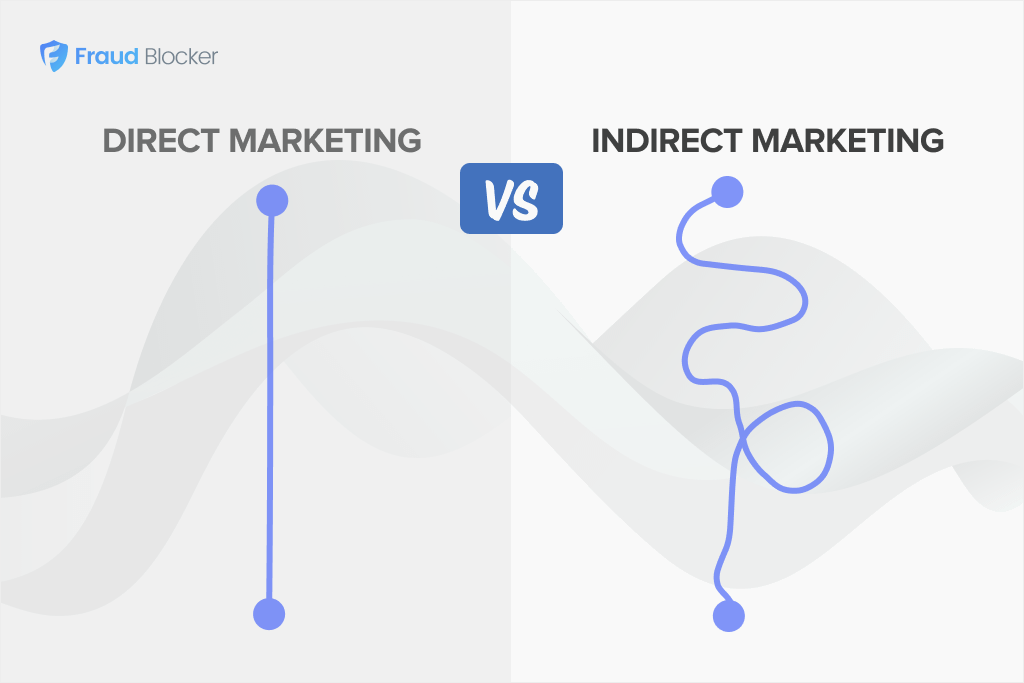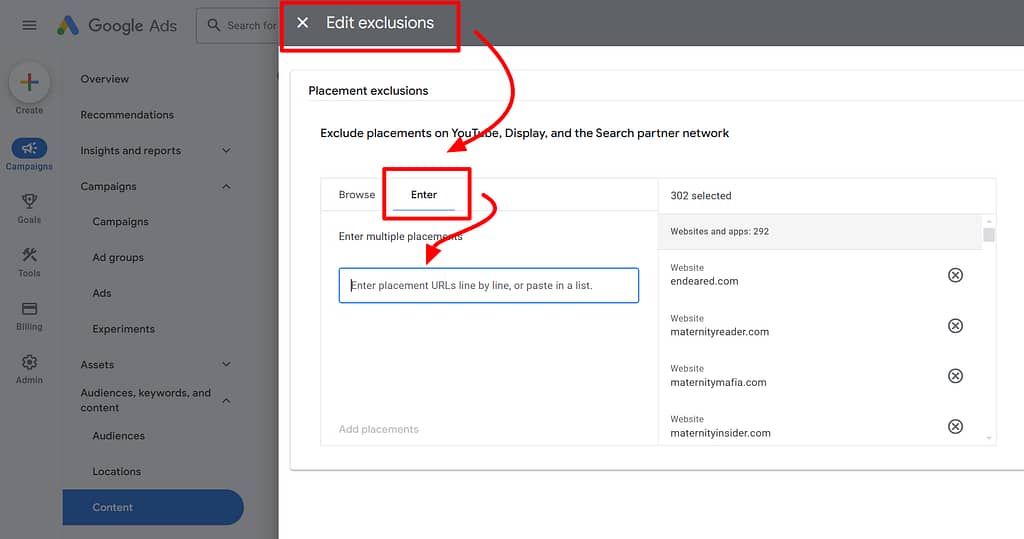
NEW New feature: Verify & block fake emails

We improve your ad performance by blocking click fraud and fake emails

Click fraud is costing advertisers billions in loses. Learn more here.

Click fraud is costing advertisers billions in loses. Learn more here.

A massive new study on Made-for-Advertising (MFA) sites was just released by the Association of National Advertisers (“ANA”) and the key findings were startling.
Key findings of the study on MFA sites:
Results from ANA study show a staggering 21% of paid impressions by advertisers is on MFA sites.
👉 Read the full ANA study here (Select “download now” in the top right corner to view the free PDF).
This study shows that Advertisers are wasting a staggering 21% of their programmatic display ad budgets on spammy, Made-For-Advertising (MFA) websites.
A similar study by AdWeek in November 2024, found that Performance Max campaigns had 40% of traffic in spammy MFA websites.
MFA sites are known for having click-bait headlines, low-quality content, a frustrating user experience and an extreme amount of banner ads surrounding the article.
Yet MFA sites generate billions of dollars from ad clicks every year and advertisers are wasting billions on these low-performing, and sometimes fraudulent websites, that have inventory sold by some of the largest programmatic exchanges in the world.
This article can help you identify what MFA sites are, how they can be harmful, and how you can protect your own ad campaigns from this kind of click fraud.
Also, before you go, check out our ultimate list of 400+ Negative Keywords. You can add these to your Google Ads campaigns to improve their performance today.
Made-For-Advertising websites are ones created solely for the purpose of ad arbitrage.
The publishers attempt to generate more revenue from a visitor clicking on ads on their website then it took them to acquire the visitor in the first place. MFA websites typically provide clickbait, sensational headlines and provocative imagery with low-quality content and an extremely large (almost abusive) amount of ad banners on page.
In short, the focus of a Made-For-Advertising website is to get the user to click or view as many ads as possible on their page.
To drive up ad impressions and clicks for their visitors, many MFA sites have a pagination-style navigation where the user must continue to click from page to page to continue reading an article. As each page loads the user is inundated with ads, with ad positions often conveniently placed near buttons to entice accidental ad clicks by the user.
MFA sites are heavily promoted with “native ads” from Outbrain, Yahoo Native and others.
MFA publishers use ad networks to serve ads on their site. But Google’s ad placement policies explicitly forbid “pages with more advertising than publisher-provided content” and pages that “encourage accidental clicks.” In other words, MFA websites are not in compliance with Google’s guidelines and may be penalized.
So these publishers avoid using Google’s AdSense and instead rely on selling ads through alternative, less scrupulous ad networks such as Taboola and Outbrain, or they use networks that recycle the ad inventory through a myriad of low-quality supply-side sellers.
Sometimes MFA sites attempt to circumvent Google’s ad policy by only showing an obtrusive amount of ads if the visitor came from an advertising channel. If a user were to visit the site directly, then the normal, acceptable amount of ads are shown, thus potentially gaining approval from Google to display their ads.
Overall, there is an enormous amount of inventory available on MFA sites (often in the billions of impressions) and the amount advertisers pay per 1,000 impressions (CPM) is often 30-40% lower than on non-MFA websites so it can be very difficult to convince marketers to avoid running ads on these sites.
In September 2023, the Association of National Advertisers (ANA) created an official definition of Made-for-Advertising websites, after working with the American Association of Advertising Agencies (4A’s), the World Federation of Advertisers (WFA) and the Incorporated Society of British Advertisers (ISBA).
According to the press release from these trade groups, MFA sites usually exhibit some combination of the following characteristics:
As discussed earlier, MFA sites are still common today and typically make up 21% of an advertiser’s impressions, often without their awareness.
There are thousands of MFA sites today that can be quickly spun-up on new domain names with duplicate content and layouts. Typically, they block bots from indexing their sites so they aren’t discoverable by search engines. This is a way to obfuscate their online footprint and help protect them from policy issues with ad networks or fraud watchdogs.
Some of these sites include 247mirror.com, definition.org, parentinfluence.com, and magellantimes.com and they all have a similar characteristics: an enormous amount of ad positions (either visible or non-visible).
Example of a typical MFA site with an excessive volume of ad units.
Yes.
There are a number of reasons advertisers should consider avoiding running ads on MFA sites:
Hidden ads are a common theme among MFA sites based on their urgent need to maintain a profitable ad arbitrage business.
In many cases, ads are loaded that aren’t visible to the human eye. These ads can be stacked beneath other visible ads or loaded inside a 1×1 iframe pixel anywhere on the page (also known as “pixel stuffing”). Ads can also be auto-refreshed at a very high rate to serve more impressions.
By using AdBlock (no affiliation with our company), you are able to track the amount of ads that are loaded on the page. In the MFA examples below more than 100 ads were served in the first 15 seconds of the page loading. This is a common trait among most MFA sites.
7 ads are visible but 93 are detected on a page at nonstopnostalgia.com.
101 ads detected on historyobsessed.com within 15 seconds of loading the page.
131 ads detected on everydaykoala.com within 15 seconds of loading the page.
The first step to blocking MFA sites is to add as many as you can to your exclusion lists inside your Google Ads account (or whichever network you’re using).
Research by Adalytics discovered that many MFA sites use the same analytics tags and account IDs (such as Facebook pixel ID and Google Adsense ID), which are publicly accessible in the HTML of their site. When this was combined with information from their ads.txt files it allowed Adalytics to create an interconnected network graph that can identify shared ownership across many websites. Their report is very thoughtful and worth reading if you’re looking for more details on how this works.
Below is a list of some of the most common MFA sites. You can upload this list into your Google Ads account to prevent your ads from appearing on them (if you’re not familiar with how to do this, read here).
You want to exclude these from the “placements” in your Google Ads account.
Here’s how:


In addition to using this list, you can add Fraud Blocker to your marketing tools.
We are an independent click fraud service that detects and blocks bots, malware and other invalid traffic sources in real-time, 24/7.
By using our service you’ll save on wasted invalid ad clicks and avoid the need to regularly submit to Google Ads for a refund since we block many of the malicious sources before they can be clicked on by them. Get started with our no-risk, 7-day free trial here.


